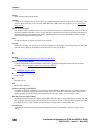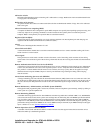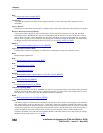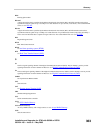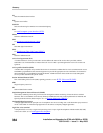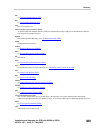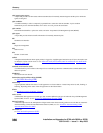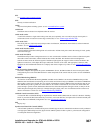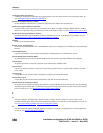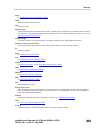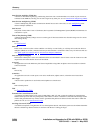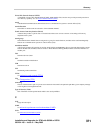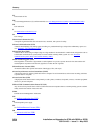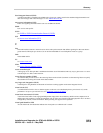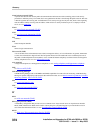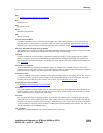
Glossary:
368
Installation and Upgrades for G700 with S8300 or S8700
555-234-100 — Issue 3 — May 2003
synchronous data transmission
A method of sending data in which discrete signal elements are sent at a fixed continuous rate and specified times. See
also Synchronous Optical NETwork (SONET).
Synchronous Digital Hierarchy (SDH)
An ITU standard for transmission in synchronous optical networks. SDH is used outside the US.
Synchronous Optical NETwork (SONET)
A system of fiber optic transmission rates for speeds from 51 Mbps to 30 Gbps and higher. SONET defines a standard
that allows for the interworking of transmission products from multiple vendors. See also Optical Carrier level-3 (OC3)
.
Synchronous Transport Module-1 (STM-1)
Synchronous Optical Network (SONET) standard for transmission over OC-3 optical fiber at 155.52 Mbps. See also
Optical Carrier level-3 (OC3)
; Synchronous Optical NETwork (SONET).
SYSAM
System access and administration
System Access Terminal (SAT)
An interface into the DEFINITY Server and DEFINITY media server configurations for administrative and maintenance
functions.
system administrator
A person who maintains overall customer responsibility for administration of a communications system.
System Management Terminal (SMT)
An administration device for System 85. The SMT provides the customer with limited administration capability.
system printer
An optional printer that can be used to print the reports that the report scheduler sends.
system reload
A process by which stored data is written from a tape into the system memory. A system reload normally occurs after a
power outage.
system report
A report that provides historical traffic information for splits that are measured internally.
system status report
A report that provides real-time status information for splits that are measured internally.
Systems Network Architecture (SNA)
An architecture for computer networking that establishes a logical path between network nodes, and routes each message
with addressing information that is contained in the protocol. SNA uses the Synchronous Data-Link Control (SDLC)
protocol exclusively. See also
Synchronous Data-Link Control (SDLC).
T
T1
The most commonly used digital line in the US, Canada, and Japan. In these countries, T1 carries 24 pulse code
modulation (PCM) signals using time-division multiplexing (TDM) at an overall rate of 1.544 megabits per second. See
also pulse-code modulation (PCM)
; time-division multiplexing (TDM).
T3
The North American standard for Digital Signal Level 3 (DS-3). T3 operates at a signaling rate of 44.736 megabits per
second. See also
digital signal level n (DS-n).



